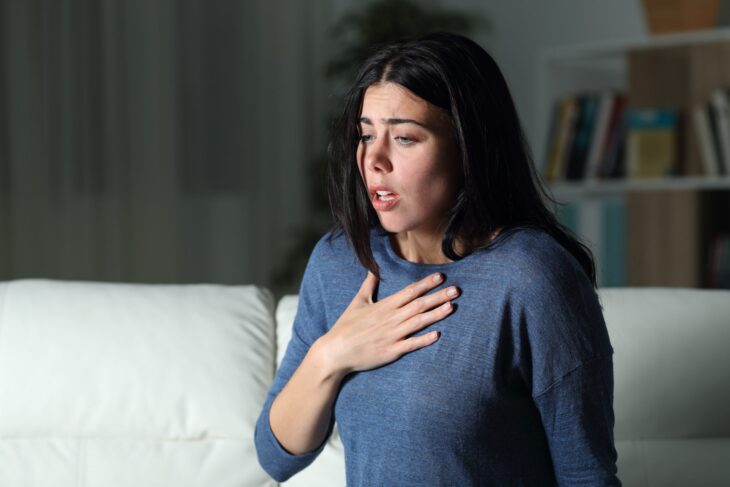If we try to go back three years, or more, a large percentage of people would not assume that they would have an blood oxygen monitor at home in 2024 and 2024. Maybe some of them did not know what it was, until the coronavirus appeared in the world, and started a global pandemic that changed our lives forever, including the need for devices like this to be available to buy.
Every organ in the body needs oxygen to survive. Without oxygen, cells can die, which can lead to organ failure, and serious conditions, or even death. The body carries oxygen to all organs through the blood. Pulse oximeter measures saturation, which is the percentage of oxygen in hemoglobin proteins in red blood cells.
The saturation level should be between 95 and 100 percent. Anything below 90 percent is considered abnormally low and maybe an emergency.
Contents
Why is an blood oxygen monitor used at home?

The general oximeter is a device that painlessly measures the level of oxygen in the blood. The purpose of the device is to show how much oxygen the heart carries in the body. The device is in the form of a clip that is usually attached to the finger of the hand and is most often used in emergency rooms and hospitals, or with the new situation, at home. Some of the newer models are available as a ring, for those who don’t feel comfortable wearing them as a clip over the finger.
Still, they are a little different than the finger clip ones. Besides the coronavirus, people have other issues that require tracking the saturation even when they sleep, for example in cases of sleep apnea. If you don’t know how they look, you can check Wellue, and see if you like this design more than the standard one.
O2ring is more focused on continuous measurement and the following features can better help users monitor their oxygen levels.
1. The device records data every 4 seconds while in use.
2. Accurate pulse rate & SpO2 blood oxygen saturation of arterial hemoglobin levels.
3. Monitor the number of blood oxygen drops in our app.
4. Data Storage synchronization and pulse rate analysis on Free APP for Bluetooth version.
5. Up to 10 hours SpO2 data storage. (for Bluetooth Version)
So, the benefits are countless, and that’s why some people decide to invest in devices like this.
Some doctors believe that some patients should use an oximeter in their homes. These are usually people who have a condition that causes changes in the level of oxygen in the blood, like chronic obstructive pulmonary disease, asthma, and pneumonia, or COVID-19, if they are infected with the coronavirus.
Can we say that there are benefits to having this device at home? Sure, and here are some of them:

Source: helpguide.org
When we are sick, half of the symptoms we have are a result of the anxiety that comes with the diagnosis. Sometimes, we measure our temperature, weight, the number of taken breaths in a minute, and the COVID patients are using it to control the saturation at the moment they feel like they can’t breathe. People want to be prepared for everything, so it’s not too late when an ambulance is called or they are taken to the emergency.
Also, stress and anxiety are huge factors within the family members too, who take care of the patient. While sick of COVID-19, the breathing is changed, but it doesn’t mean the saturation is lower. But, just in case to be sure, you or someone close to you, can use this device to have control over what’s happening and react on time if needed.
2. Shows if there is a need for oxygen supplementing
Some levels of saturations are tolerable, but when it drops, the need for oxygen is more than obvious. Maybe we didn’t ever think we will know these things someday, but things like this happen easily, and we should be ready for everything we need.
3. Indicates if the medicines you take affect your breathing

Source: hackensackmeridianhealth.org
Some medicines work in a way that may shorten your breaths and you will feel like you can’t breathe as you take them. But, by using a pulse oximeter, you will be 100% sure if they cause a lack of oxygen in your body, or it’s just a temporary reaction that goes away after a few minutes.
4. Keeping track on effectiveness of breathing interventions
Some patients need more invasive oxygen therapy, so their bodies can appropriately respond to it. The oximeter, in this case, will check if the therapy is doing its job nicely, or there is a need for a different dosage.
Pulse oximetry is commonly used practice for different conditions, but we get to know it better due to the coronavirus. Until then, and of course, it’s still used for different lung diseases, including asthma, lung cancer, COPD, and pneumonia, but also for anemia, and other heart diseases. On the other hand, doctors are tracking the efficiency of new medications and therapies they apply to the patient. In some cases, it can be used to measure oxygen levels during sleep apnea.
It’s also good to know that these gadgets are pretty accurate, with around 2% difference, which means if it measures the saturation of 95%, it can be any value between 93% and 97%, which is an accuracy we need so we can know if something is good or bad.
Interesting facts to know about pulse blood oxygen monitor
It’s a device that beams different wavelengths of light through the skin, and it measures the oxygen carried by hemoglobin. According to the health technicians, it can be placed on the index finger or the third one on your dominant hand, but you will see some people using it even on the thumb. The truth is it won’t make such a big difference. On the other hand, the skin tone can make a difference, and some studies showed that people with darker or even black skin get more inaccurate results, even though it still shows if there is some issue or not. Those who prefer to wear nail polish too should be very careful, because depending on the color, the results may not be as accurate as expected.
The final words
At the end of this article, we can conclude that this device is not a need, but it’s nice to have it, especially while this whole thing with the pandemic lasts.
Keep in mind that you shouldn’t run to your doctor every time it shows some lower value. Give the device a rest, and then measure the saturation again, to compare the results. Sometimes, there can be some glitch in the way it works, and it’s confusing. Use it smartly, and don’t panic every time it shows 89% saturation.
